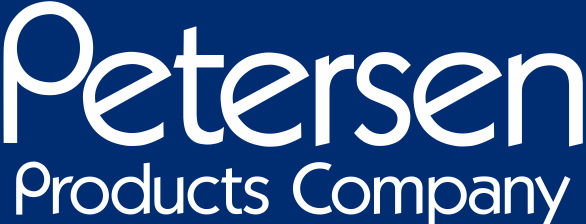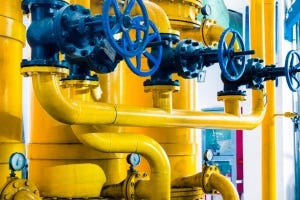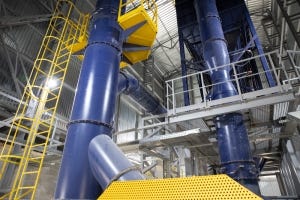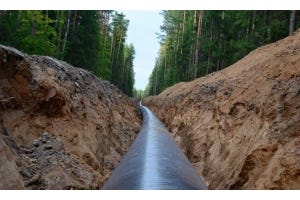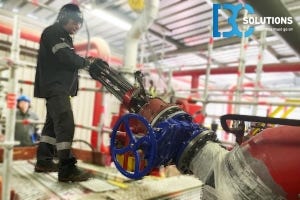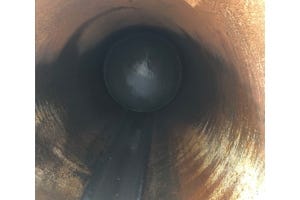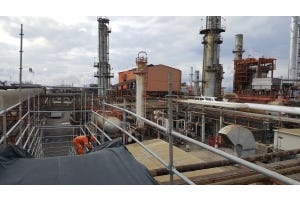7 Proven Methods for Preventing Pipeline Corrosion

Pipeline corrosion is the progressive degradation of materials due to moisture, chemicals, or electrochemical processes. This process weakens pipelines over time, leaving them prone to damage. Corrosion is a common problem for pipelines that convey water, oil, gas, or industrial materials since they are constantly exposed to harsh environments.
Pipeline corrosion prevention is critical for pipeline safety and efficiency. Corroded pipes may lead to costly leaks, environmental damage, and structural failures. By adopting proactive efforts to preserve pipelines, you may reduce hazards, lower maintenance costs, and assure consistent operation.
Understanding Pipeline Corrosion & Types
Pipeline corrosion occurs when multiple factors deteriorate the material over time. Chemical reactions such as oxidation and acid exposure play an important influence. Environmental factors such as soil moisture, temperature, and salinity speed up the process. Internally, the contents being transported—whether chemicals, water, or oil—can all lead to corrosion.
Types of Pipeline Corrosion
There are several distinct types of corrosion that can affect pipelines:
- Uniform Corrosion: This corrosion refers to even wear across the whole surface of the pipeline.
- Localized Corrosion: Specific damage, such as pitting, fissures, or stress corrosion cracking.
- Microbial Corrosion: Corrosion produced by bacteria or microorganisms found in or around the pipeline.
Understanding these types allows for more effective identification and prevention of corrosion concerns.
7 Proven Pipeline Corrosion Prevention Methods
- Apply Protective Coatings and Linings
- Utilize Cathodic Protection Systems
- Opt for Corrosion-Resistant Materials
- Regular Pipeline Monitoring and Inspection
- Environmental Control Measures
- Optimize Pipeline Design
- Use Corrosion Inhibitors
Protective coatings and linings effectively prevent pipeline corrosion by acting as a barrier to moisture, chemicals, and other dangerous factors. Common coatings for pipelines include epoxy, fusion-bonded epoxy (FBE), and polyurethane linings. Epoxy coatings are resistant to chemicals and moisture, FBE provides a strong connection to the pipe surface, and polyurethane is resistant to abrasion, making it excellent for mechanically stressed pipelines.
These coatings significantly extend the lifespan of pipelines by preventing corrosion and reducing the need for expensive repairs. When properly applied and maintained, they provide long-term pipeline corrosion protection, keeping pipelines safe and working in challenging situations.
After applying protective coatings and linings, cathodic protection systems are a highly successful means of preventing pipeline corrosion. This technology uses electrochemical processes to protect the pipeline by changing its electrical charge, making it less prone to corrosion.
There are two main types of cathodic protection: sacrificial anodes and impressed current systems. Sacrificial anodes are formed by attaching a more reactive metal, such as zinc or magnesium, to a pipeline. These anodes corrode in place of the pipeline and provide protection.
Impressed current systems rely on an external power source to deliver a constant flow of electricity while protecting the pipeline from corrosive factors. This method for pipeline corrosion is especially effective for pipes buried underground or submerged in water, where moisture and soil conditions can accelerate corrosion.
Choosing corrosion-resistant materials is a proactive strategy to avoid corrosion from the start. Materials like stainless steel, polyethylene, and composites are designed to deal with chemical reactions and environmental damage, making them ideal for pipeline construction. These materials offer long-term protection, reducing the risk of corrosion and extending the pipeline's lifespan.
The use of corrosion-resistant materials has many advantages, including a high resistance to chemicals and environmental variables, which helps reduce maintenance costs over time. By using these materials, pipeline operators can prevent costly repairs and replacements
Line stops, for example, can be used to temporarily seal corrosion-resistant pipes during maintenance to keep them secure and protected while work is being done.
Regular pipeline monitoring and inspection are crucial for detecting corrosion early, hence avoiding costly pipeline breakdowns. Consistent inspections ensure that any signs of wear or damage are detected before they get worse.
Inline smart pigging, ultrasonic testing, and video inspections are standard techniques for monitoring pipeline problems. Inline smart pigging uses a device that travels through the pipeline to detect corrosion and other problems. Ultrasonic testing determines the thickness of the pipeline wall to detect thinning caused by corrosion, whereas video inspections provide a visual overview of the pipeline's condition.
Environmental control strategies focus on controlling environmental elements such as soil pH, moisture, and salinity, which can accelerate corrosion. Controlling these elements reduces their corrosive impact on pipelines. One method is to backfill trenches with water-resistant materials, which helps reduce pipeline exposure to harmful moisture.
In cases where pipeline sections need to be isolated during environmental adjustments, inflatable test plugs can be used. These plugs are suitable for temporarily shutting sections of pipelines, allowing for safer and more controlled environmental changes.
Optimizing pipeline design is critical for reducing weak points that might contribute to corrosion. By eliminating sharp bends, ensuring sufficient drainage, and avoiding abrupt transitions, you can reduce pipeline stress and prevent corrosion. Properly built pipes reduce the chance of localized corrosion, which frequently happens near bends or in locations with poor drainage.
These design changes not only increase the pipeline's lifespan, but also improve its overall performance, reducing maintenance costs and increasing operational efficiency.
Corrosion inhibitors are chemicals that reduce or neutralize corrosion agents, which stops pipeline materials from breaking down. These chemicals can be injected directly into the pipeline or applied as a coating to give long-lasting protection. Corrosion inhibitors work by reacting with corrosive substances to effectively neutralize them or develop protective layers on the pipeline surface.
They are particularly effective in pipelines that transport water or corrosive chemicals, where corrosion is more likely. Using corrosion inhibitors as part of a complete corrosion management strategy can significantly reduce the requirement for pipeline repairs while also extending their operational life.
Conclusion
Understanding pipeline corrosion and implementing preventative measures are critical to ensure pipeline integrity and longevity. By proactively tackling corrosion with technologies such as protective coatings, cathodic protection, corrosion-resistant materials, and regular monitoring, you could drastically decrease the chance of pipeline failures and costly repairs.
Regular inspection and maintenance are critical for detecting possible problems early and ensuring that pipelines remain operational and safe. Implementing these preventative techniques not only increases pipeline lifespan, but it also reduces downtime, improves efficiency, and lowers maintenance costs.
Disclaimer: The information may be used but with no warranty or liability. This information is believed to be correct but should always be double checked with alternative sources. Strictly adhere to and follow all applicable national and local regulations and practices.
Regardless of these comments, it is always necessary to read and understand manufacturer’s instructions and local regulations prior to using any item.
